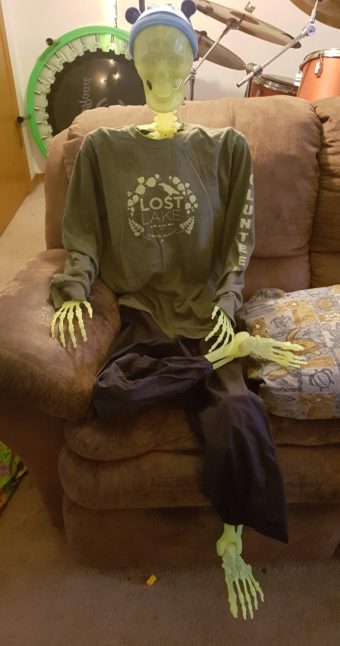
Meet Christof
As the first Science unit of the year, we were a bit slow at gaining momentum, and there was some evolving, but with only 7 units to cover the entire year there is plenty of time for each. I think it has turn out quite well. The subject matter is very straight forward and there are a TON of great and fun resources, as well as projects to do about the skeletal system. And splinting! This is not only rather easy, it’s just super fun, and even the littlest of kids feel like real rescuers with the use of a basic splint. Did I mention that we did this early in the school year? Yup, right before Halloween… the perfect time to look for large skeleton cadavers for rescuing!
NOTE: The links on this page have been included solely for your convenience. Although I will get a very small commission for any sales, it is not my intent to pressure you to buy anything.
The basic goals of this unit:
- Learn a little about the structure of our bones and how they play a role in the body as a whole; our structural frame, protection of organs, and blood production
- Learn how many bones we have and memorize the names of major ones; as many as is feasible for their age, and particularly those that are the most useful to know for basic Responder Care.
- Learn how to use triangle bandage cravats, board splints, and flexible aluminum splints (SAM splint)
Our resources for bones and skeleton (books pictured below):
- The bones chapter of “A Trip Through the Body” by Laurie Blake
- The bones chapter of “The Human Body Book” by Parker
- “The Bones Book and Skeleton” Kit
- Coloring pages from “The Body Book” by Scholastic
- The bone section of Reader Digest’s “How the Body Works,” and several experiments from pages 48-45 about bone structure
- The Skull model from the “MAKE it WORK! BODY” book
- Various ‘bones’ songs from YouTube for fun.
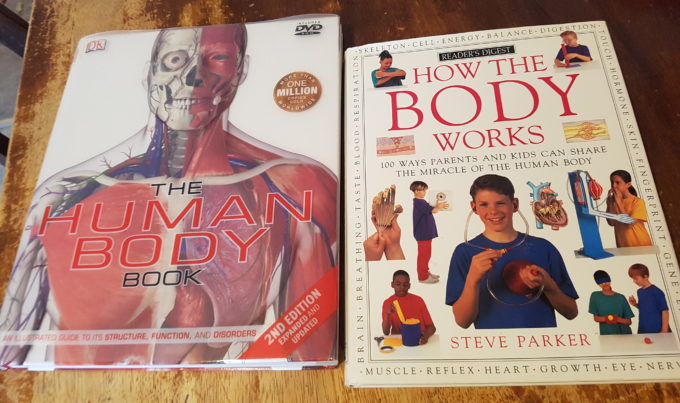
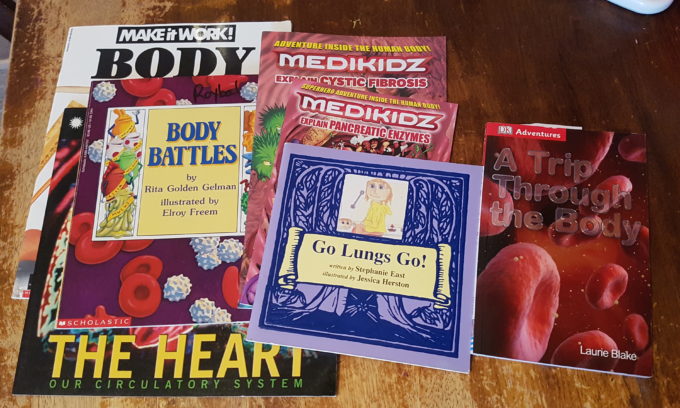
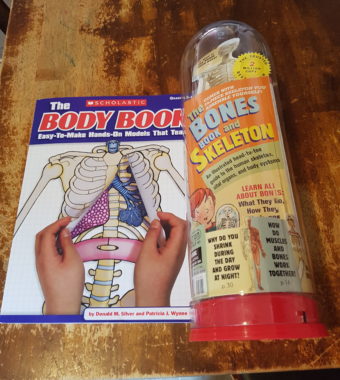
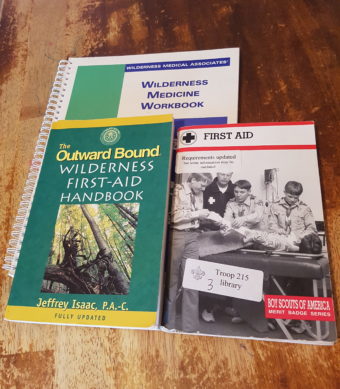
Our resources for Splints and Slings:
- A hand-me-down Boy Scout First Aid Guide (You can ask around for one or find something similar
on Amazon
. The Johns Hopkins: First Aid for Children Fast
book is a cheap and easy resource that is VERY kid friendly.)
- My old Outward Bound Wilderness First-Aid Handbook
from Wilderness First Responder training a while back:
- The Musculoskeletal System chapter and the SOAP studies* on pages 21, 23, and 103-105, (following the Organized Thinking chapter)
- and the Wilderness Medical Associates Wilderness Medicine Workbook, 5th Edition to go with it: #15
- By far one of the most useful: I printed off the cravat and bandage ties from this Online PDF.
- And obviously, YouTube is a great place to go for videos about splinting and tying slings.
*The Outward Bound book and SOAP workbook are definitely adult level resources for wilderness triage, but having had the training before I enjoy using them for homeschool.
EDIT – A few extra activity suggestions that we didn’t do, but I thought might have been fun after-the-fact:
- Make your own cast using plaster-of-paris sheets. (Just be very careful about circulation.)
- Visit a bone and fracture specialist office.
- Visit a natural history museum so see bones close up, even if they aren’t human.
So, how did it go? We really had a lot of fun!
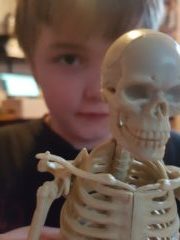
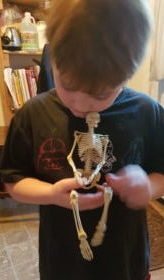 We put together the mini skeleton in the kit. (Be careful attaching his hands and feet. If you break it, like I did, message me for an easy zip-tie fix.)
We put together the mini skeleton in the kit. (Be careful attaching his hands and feet. If you break it, like I did, message me for an easy zip-tie fix.)
We (I) tediously made in-larged copies of that skull from the book and cut it out. I think it was worth the 4 hours of my life. It looks pretty cool.
We cut-out and colored copies of the body together, which we will add the other parts to as we go along.
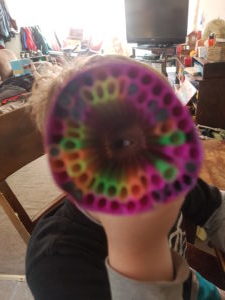
A model about our bone structure.
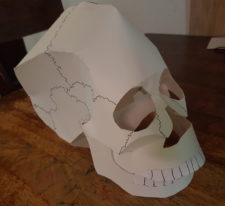 We used our 5 foot glow-in-the-dark Halloween skeleton Cadet named Christof to check-out and memorize the bones. (We also have a smaller one (about 2 feet tall) named Skelly.)
We used our 5 foot glow-in-the-dark Halloween skeleton Cadet named Christof to check-out and memorize the bones. (We also have a smaller one (about 2 feet tall) named Skelly.)
We started with a flexible aluminum splint and cheap ‘ace’ bandages, before making our own board splints and triangle bandages for more proper splinting.
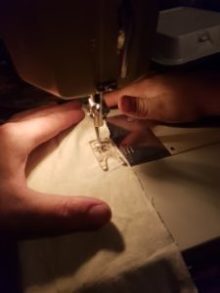
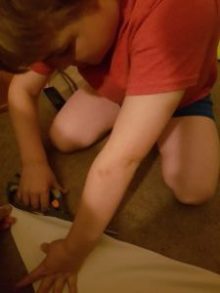
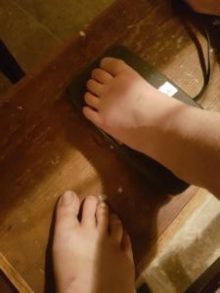
5 homemade board splints; 16, 24, and 36 inch 1/2 by 2 1/2 craft pine, washable sleeve, and 1 inch foam. (Although you can buy them cheap enough, it was an easy way to incorporate some home-ec skills, and I didn’t have to wait for shipping.)
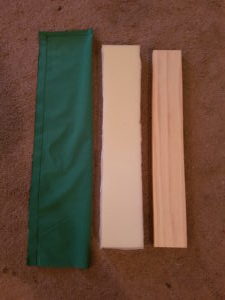
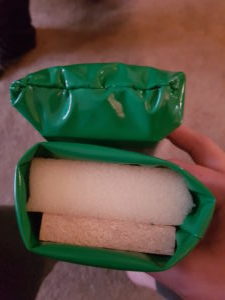
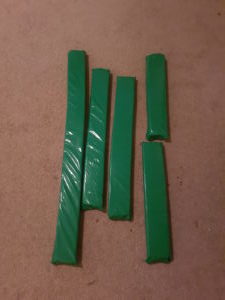
After some practice we started staging Christof in various calamities (in and out of doors) for rescue.
We even learned how to do some multi person carries, and how to make a litter/stretcher with long sticks and a blanket.
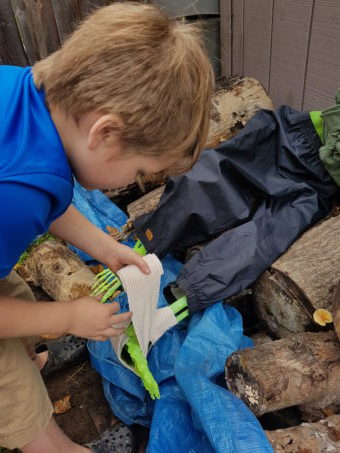
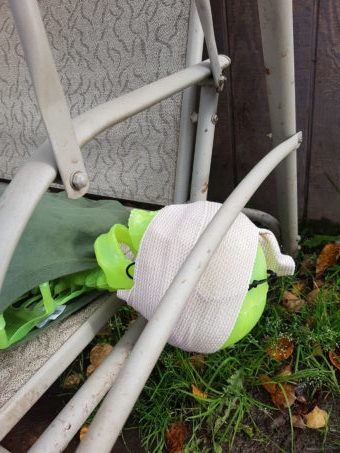
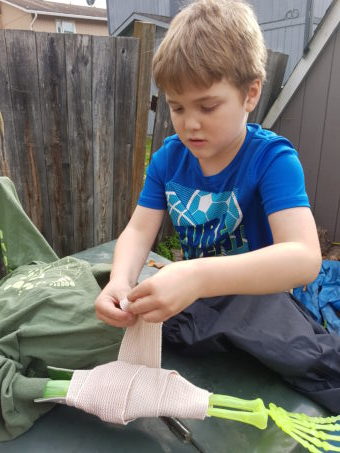
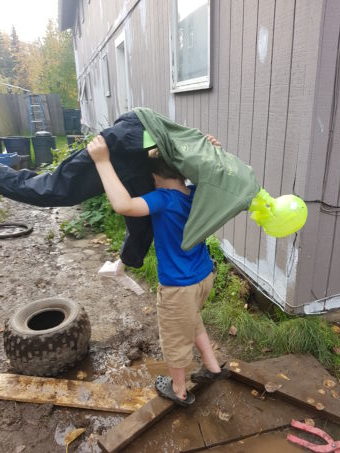
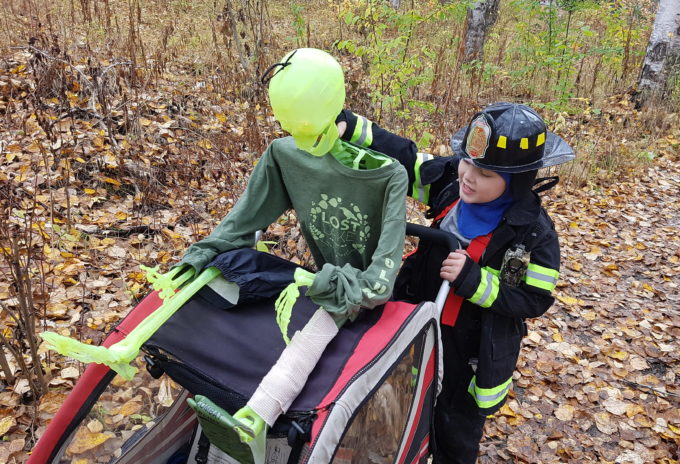
A lot of our learning was done through play and random ‘unschooled’ questions and discussion throughout the weeks. As a sample for his distance teacher, we finished it up with a body outline in which Nathan drew the bones he had learned. We use this to begin his personal First Responder Book, which has a chart with the bones labeled, followed by his own drawn chart. After that we added a few drawings depicting some broken bones and a Form Page with the headings “Symptoms/Assessment,” “Anticipated Problems,” and ” Treatment Plan” to which Nathan filled in the blanks himself; basically a simplified S.O.A.P chart. We will use this same form page for other ailments, such as a muscle sprain, and continue filling in his book. It’s really more about incorporating Language Arts skills than anything else, but it will make for a great keepsake.
The great thing about all this learning is that it ties right in with the next unit on muscles, in-which we will build on these first skills by talking about how the bones are directed by our muscles, and will learn now to do more specific bandaging for sprains.
If this information was helpful or just interesting be sure to leave us a comment! And keep an eye our for postings on the rest of the units for Elementary First Responder Skills. We are also doing Firefighter Skills if you think that might be something your homeschooler(s) would be interested in. Here is a list with all the Units and links to each upon completion.

Post a comment